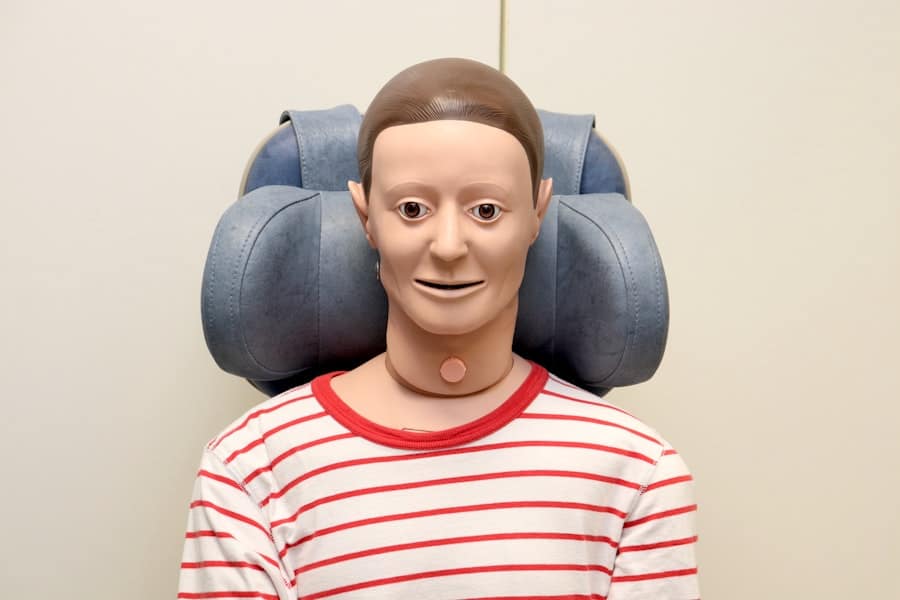Facial recognition technology has experienced a meteoric rise in recent years, driven by advancements in artificial intelligence and machine learning. Initially developed for security and surveillance purposes, this technology has evolved to encompass a wide array of applications, from unlocking smartphones to identifying individuals in crowded public spaces. The proliferation of high-resolution cameras and the increasing availability of vast datasets have significantly enhanced the accuracy and efficiency of facial recognition systems.
Companies like Amazon, Google, and Microsoft have invested heavily in developing sophisticated algorithms that can analyze facial features with remarkable precision, leading to a surge in adoption across various sectors. The integration of facial recognition technology into everyday life is evident in numerous contexts. For instance, airports have begun utilizing this technology to streamline passenger identification processes, reducing wait times and enhancing security measures.
Retailers are also leveraging facial recognition to analyze customer demographics and preferences, allowing for more personalized shopping experiences. As the technology continues to mature, its applications are expected to expand further, potentially transforming how we interact with digital platforms and physical environments alike. However, this rapid growth raises important questions about the implications of widespread facial recognition use, particularly concerning privacy and ethical considerations.
Key Takeaways
- Facial recognition technology has seen a significant rise in usage across various industries, including government, law enforcement, business, and marketing.
- Privacy concerns and data security issues have emerged as major challenges with the widespread adoption of facial recognition technology.
- Bias and discrimination in facial recognition algorithms have raised ethical concerns regarding fairness and accuracy in identifying individuals from diverse backgrounds.
- The ethical implications of government and law enforcement use of facial recognition technology have sparked debates about surveillance, civil liberties, and human rights.
- Facial recognition technology has potential for misuse and abuse, leading to concerns about unauthorized surveillance, tracking, and invasion of privacy.
Privacy Concerns and Data Security
The widespread deployment of facial recognition technology has ignited significant privacy concerns among individuals and advocacy groups. One of the primary issues is the potential for mass surveillance, where individuals can be tracked without their consent or knowledge. This capability poses a direct threat to personal privacy, as it allows governments and corporations to monitor citizens’ movements and behaviors continuously.
The fear of being constantly watched can lead to a chilling effect on free expression and public assembly, as individuals may feel deterred from participating in protests or expressing dissenting opinions. Moreover, the data security aspect of facial recognition technology cannot be overlooked. The storage and processing of biometric data raise critical questions about how this sensitive information is protected.
High-profile data breaches have demonstrated that even large organizations can fall victim to cyberattacks, leading to unauthorized access to personal information. If facial recognition databases are compromised, the consequences could be dire, as individuals’ biometric identifiers could be misused for identity theft or other malicious purposes. The lack of robust security measures and clear regulations surrounding the handling of biometric data exacerbates these concerns, leaving individuals vulnerable in an increasingly digital world.
Bias and Discrimination in Facial Recognition

Another pressing issue associated with facial recognition technology is the potential for bias and discrimination. Numerous studies have shown that these systems can exhibit significant inaccuracies when identifying individuals from certain demographic groups, particularly people of color and women. For example, a study conducted by MIT Media Lab found that facial recognition algorithms misidentified darker-skinned women at rates significantly higher than their lighter-skinned counterparts.
The implications of biased facial recognition systems extend beyond mere inaccuracies; they can perpetuate systemic discrimination and reinforce existing societal inequalities. When law enforcement agencies rely on flawed technology that disproportionately misidentifies marginalized communities, it can lead to wrongful arrests and increased scrutiny of these populations.
This cycle of bias not only undermines trust in law enforcement but also exacerbates social tensions. Addressing these biases requires a concerted effort from developers, policymakers, and civil society to ensure that facial recognition technology is designed and implemented in a manner that is equitable and just.
Ethical Implications of Government and Law Enforcement Use
The use of facial recognition technology by government entities and law enforcement agencies raises profound ethical questions about surveillance, accountability, and civil liberties. As governments increasingly adopt this technology for crime prevention and public safety, concerns about overreach and abuse become paramount. The potential for surveillance systems to be used for political repression or to target specific groups based on race or ideology is a significant risk that cannot be ignored.
Historical precedents demonstrate how surveillance technologies can be weaponized against marginalized communities, leading to violations of human rights. Furthermore, the lack of transparency surrounding the deployment of facial recognition systems by law enforcement complicates the ethical landscape. Citizens often remain unaware of how their data is being collected, stored, and utilized, which undermines the principles of informed consent and accountability.
The absence of clear guidelines governing the use of facial recognition in policing can lead to arbitrary or discriminatory practices that disproportionately affect vulnerable populations. To navigate these ethical dilemmas, it is essential for policymakers to establish robust oversight mechanisms that prioritize civil liberties while balancing the legitimate needs of public safety.
Facial Recognition in Business and Marketing
Beyond its applications in security and law enforcement, facial recognition technology has found a foothold in the business and marketing sectors. Companies are increasingly utilizing this technology to gain insights into consumer behavior and preferences. For instance, retailers can analyze foot traffic patterns in stores by tracking customer movements through facial recognition systems.
This data allows businesses to optimize store layouts, tailor marketing strategies, and enhance customer experiences based on real-time insights. Moreover, personalized marketing campaigns powered by facial recognition can create more engaging interactions between brands and consumers. By recognizing returning customers and analyzing their previous purchases or preferences, businesses can deliver targeted promotions that resonate with individual shoppers.
However, this practice raises ethical questions about consumer consent and privacy. Many consumers may not be aware that their images are being captured and analyzed for marketing purposes, leading to potential backlash against companies perceived as intrusive or exploitative. Striking a balance between leveraging technology for business growth while respecting consumer privacy is crucial for maintaining trust in the marketplace.
Potential Misuse and Abuse of Facial Recognition

The potential for misuse and abuse of facial recognition technology is a significant concern that warrants careful consideration. As the technology becomes more accessible, there is a risk that it could be employed for nefarious purposes by malicious actors or authoritarian regimes. For instance, stalkers or harassers could use facial recognition tools to track individuals without their consent, leading to severe violations of personal safety and autonomy.
Additionally, governments with authoritarian tendencies may exploit facial recognition for mass surveillance, targeting dissidents or activists who challenge the status quo. The proliferation of deepfake technology further complicates the landscape surrounding facial recognition. Deepfakes—manipulated media that convincingly alter an individual’s likeness—can be used in conjunction with facial recognition systems to create false identities or fabricate evidence.
This convergence poses significant risks not only to individual privacy but also to societal trust in media and information sources. As these technologies continue to evolve, it becomes imperative for stakeholders to develop safeguards that prevent misuse while promoting responsible innovation.
Legal and Regulatory Frameworks for Facial Recognition
As facial recognition technology continues to permeate various aspects of society, the need for comprehensive legal and regulatory frameworks becomes increasingly urgent. Currently, the regulatory landscape surrounding facial recognition is fragmented, with different jurisdictions adopting varying approaches to governance. Some regions have implemented strict regulations limiting the use of facial recognition by law enforcement, while others have embraced its deployment without significant oversight.
In the United States, for example, several cities have enacted bans on facial recognition technology in policing due to concerns about civil liberties violations and racial bias. Conversely, countries like China have integrated facial recognition into their national surveillance systems with minimal restrictions, raising alarms about privacy rights and state control. The lack of uniformity in regulations creates challenges for businesses operating across borders and complicates efforts to establish best practices for ethical use.
To address these challenges, policymakers must engage in dialogue with technologists, civil rights advocates, and industry stakeholders to develop coherent frameworks that prioritize transparency, accountability, and individual rights. Such frameworks should encompass guidelines for data collection, storage, usage limitations, and mechanisms for redress in cases of misuse or harm.
Ethical Considerations for the Future of Facial Recognition Technology
Looking ahead, the ethical considerations surrounding facial recognition technology will play a pivotal role in shaping its future trajectory. As advancements continue to emerge at a rapid pace, it is essential for developers and policymakers to prioritize ethical design principles that mitigate risks while maximizing benefits. This includes fostering inclusivity in algorithm development to address biases effectively and ensuring diverse representation within teams working on these technologies.
Citizens should be informed about how their data is being used and have a voice in discussions about its deployment in public spaces or commercial settings. Establishing clear channels for public feedback can help build trust between technology providers and users while promoting accountability.
Ultimately, the future of facial recognition technology hinges on striking a delicate balance between innovation and ethical responsibility. By prioritizing transparency, fairness, and respect for individual rights, society can harness the potential benefits of this powerful tool while safeguarding against its inherent risks. As we navigate this complex landscape, ongoing dialogue among stakeholders will be essential in shaping a future where technology serves humanity’s best interests rather than undermining them.
In the rapidly evolving landscape of technology, the ethical implications of facial recognition software continue to spark intense debate. A related article that delves into the broader context of technological advancements is Unlock Your Potential with the Samsung Galaxy Book2 Pro. This piece explores the capabilities of modern computing devices, which often serve as platforms for deploying advanced software, including facial recognition technologies. By understanding the hardware that supports such innovations, we can better appreciate the complexities and ethical considerations that come with their use.
FAQs
What is facial recognition technology?
Facial recognition technology is a biometric software application capable of identifying or verifying a person from a digital image or a video frame from a video source.
How does facial recognition technology work?
Facial recognition technology works by analyzing and comparing patterns based on the person’s facial contours and features. It uses algorithms to map facial features from the image or video and compares the information with a database of known faces to find a match.
What are the ethical dilemmas associated with facial recognition technology?
Some of the ethical dilemmas associated with facial recognition technology include invasion of privacy, potential for misuse by governments or corporations, bias and discrimination in identification, and lack of consent from individuals being scanned.
How is facial recognition technology being used in society?
Facial recognition technology is being used in various sectors such as law enforcement for surveillance and identification, in airports for security checks, in retail for personalized marketing, and in smartphones for unlocking devices.
What are the concerns regarding privacy and data security with facial recognition technology?
There are concerns about the collection and storage of facial recognition data, potential misuse of the technology for surveillance, and the risk of data breaches leading to unauthorized access to sensitive personal information.
What are some potential solutions to address the ethical dilemmas of facial recognition technology?
Potential solutions to address the ethical dilemmas of facial recognition technology include implementing regulations and guidelines for its use, ensuring transparency and accountability in its deployment, and developing bias-free algorithms to minimize discrimination.

